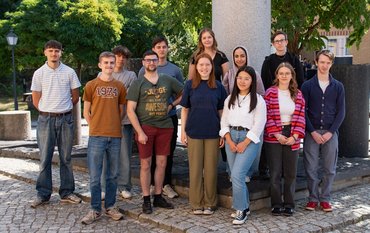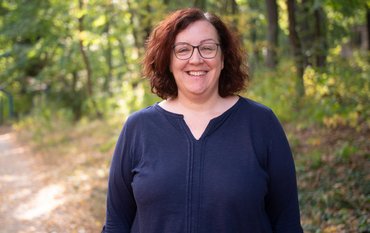On 16 June 2024, Nepalese President Ram Chandra Paudel visited the GFZ German Research Centre for Geosciences and the neighbouring research institutions on Potsdam's Telegrafenberg – the Potsdam Institute for Climate Impact Research (PIK) and the Leibniz Institute for Astrophysics (AIP) - as part of his state visit to Germany. Accompanied by his wife, he and his delegation were received by GFZ Executive Board members Prof Dr Susanne Buiter and Dr Stefan Schwartze, together with Dr Ludwig Stroink, Head of "Projects and International Affairs" at the GFZ, and Prof Dr Matthias Steinmetz, Scientific Director of the AIP.
Impressions of the visit can be seen in the photo gallery.
President Paudel was informed in particular about current research cooperation on the topics of climate change, environmental protection and natural disasters and discussed the potential for future cooperation in these areas. The South Asian country in the Himalayas is repeatedly affected by severe earthquakes - most recently in November 2023 – and flood disasters caused by increasing glacier melt and heavy rainfall. The country also suffers from severe air pollution, which gets trapped in the Kathmandu Valley, for example, so that the surrounding mountains are rarely clearly visible.
President Paudel was impressed by the wide range of research conducted on the Telegrafenberg and took an active part in the discussion:
"I thank all the three Climate Institutes namely GFZ, PIK and RIFS for their impressive and comprehensive presentations on pertinent issues of climate change. I wish all of them grand success in their future endurance," said President Paudel.
The Scientific Director of the GFZ, Susanne Buiter, thanked President Paudel for his visit:
"We are delighted with the interest shown by President Paudel and his delegation in this important research. Climate change and the associated increase in natural disasters are a challenge for us all. I agree with President Paudel that we must work together on a sustainable future on a global level in order to fulfil our responsibility for the earth and future generations. Here at the GFZ, we have been working successfully with research institutions in Nepal for many years – particularly on the topics of earthquakes, landslides and glacial lake outburst floods. We are delighted that we were able to discuss forward-looking ideas and receive positive feedback."
"Early warning for all": New concept based on seismic measurements
Susanne Buiter presented the concept of an early warning system for extreme flood events, such as those caused by a glacial lake outburst flood in Chamoli in the Indian Himalayas in 2021. More than 200 people lost their lives and entire villages and a dam were swept away by floods of water and debris.
"In the mountains of Nepal, 'early warning for all' requires comprehensive monitoring of local conditions and an awareness that individual hazardous processes such as earthquakes, landslides and floods are often interconnected. Our alternative approach utilises the high temporal resolution and spatial coverage of seismometers for this so-called multi-hazard early warning," explained Buiter.
Seismometers can not only register earthquakes, but also the seismic waves generated by landslides, debris flows and floods, including glacial lake outburst floods (GLOF). With a network of several hundred seismometers, for example, an early warning of GLOF passages of up to ten minutes can be achieved – a period of time that is sufficient to bring people to safety but also to prepare technical facilities.
The new approaches were developed by the GFZ in cooperation with the Institut des Sciences de la Terre (ISTerre) in Grenoble (France). Now the GFZ and the Department of Mining and Geology (DMG) of the Nepalese Ministry of Industry, Trade and Supply want to consolidate their cooperation in this field within the framework of a Memorandum of Understanding (MoU). This is currently in preparation.
RIFS research on air pollution in Nepal
Dr Maheswar Rupakheti, research group leader at the Research Institute for Sustainability - Helmholtz Centre Potsdam (RIFS), presented the RIFS approach to transformative sustainability research. Rupakheti, who comes from Nepal, presented his long-term project "SusKat – Sustainable atmosphere for the Kathmandu Valley". Air pollution is considered the greatest environmental health risk in South Asia with an estimated 2 million premature deaths per year. In Nepal, the situation is particularly serious: the Kathmandu Valley is one of the regions with the highest levels of air pollution in the world due to local, regional and cross-border emissions.
"Together with stakeholders, transformative solutions for air pollution control must be found that are based on sound science and the local or national characteristics and priorities in Nepal," explained Rupaketi. Science has already provided the necessary facts, now science-based strategies and plans with targets, timelines and resources are needed.
Bauhaus Earth - Sustainable Building at PIK
Prof Dr Jürgen Kropp, head of the "Urban Transformations" working group in the Climate Resilience research department at PIK, called for a new approach to sustainability: from the concept of planetary boundaries to global common goods, in the sense of "planetary stewardship".
A concrete example was the overheating of cities, influenced not least by their design and the materials used. A new approach as part of the Bauhaus Earth initiative is building with bio-based materials, which – compared to concrete - can make an important contribution to reducing CO2 and also offer advantages in terms of stability in the event of earthquakes.
To conclude: tour of the campus with astrophysical insights
The talks with President Paudel's delegation took place in the Telegrafenberg's historical library, in the geodesy research building opened in 1892. The library is located above the historic pendulum hall, where the international reference value for the gravitational constant, which was valid between 1909 and 1971, was once determined using high-precision pendulum measurements.
Incidentally, these pendulums also made the first teleseismic recording of an earthquake possible – almost by chance – in 1889. In the course of other measurements, signals were registered that turned out to be seismic signals from an earthquake in the Pacific, near Japan. This proved the power of seismological data acquisition 135 years ago.
In the AIP's large refractor, presented by Matthias Steinmetz, the GFZ then invited guests to a lunchtime snack. President Paudel then visited the Einstein Tower, while part of the delegation took a guided walk around the historic campus of the Albert Einstein Science Park.
Background: Scientific cooperation between the GFZ and Nepal
The German Research Centre for Geosciences, a member of the Helmholtz Association, has been working very successfully with research institutions in Nepal for many years. The most important local partners are the Department of Mining and Geology (DMG) of the Ministry of Industry, Trade and Utilities, the Department of Hydrology and Meteorology (DHM) of the Ministry of Energy, Water Resources and Irrigation and Tribhuvan University.
The bilateral co-operation is mainly focused on the following research areas:
- Landslide monitoring and dynamic hazard assessment using remote sensing
- Seismic detection of (glacial) lake outburst floods and possible early warning
- Seismic detection of earthquakes


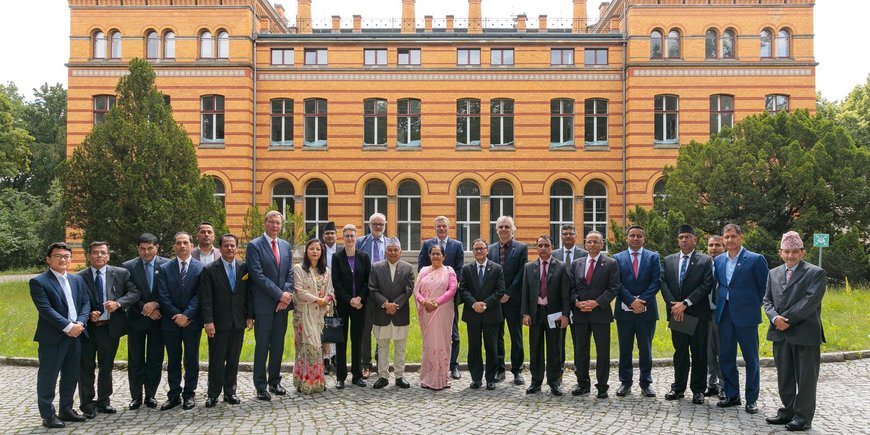
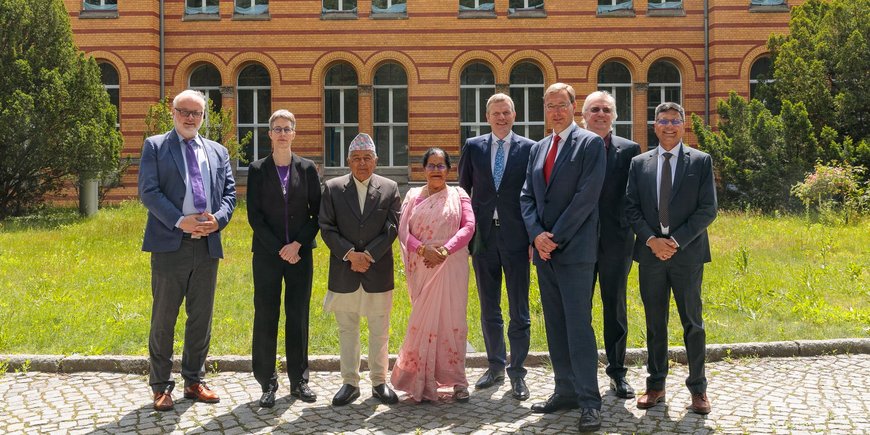
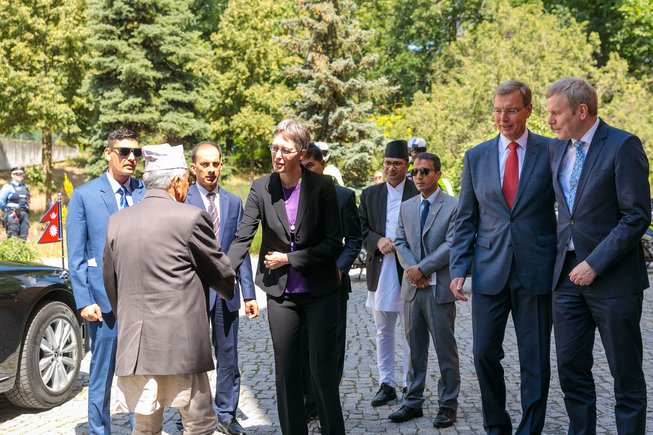
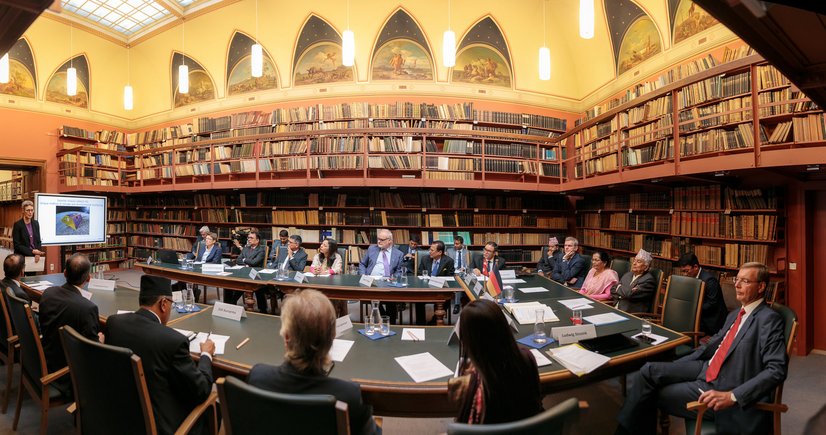
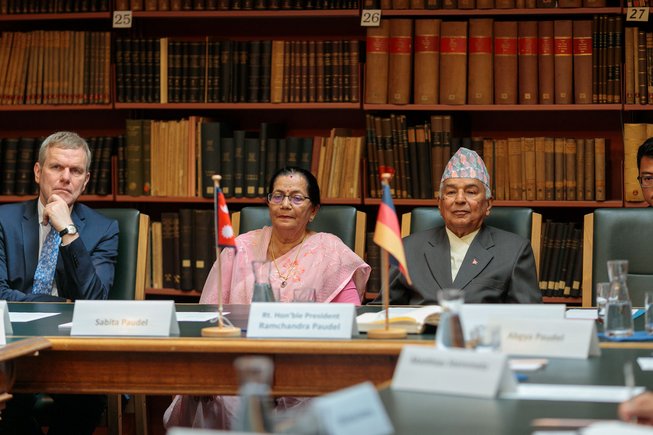
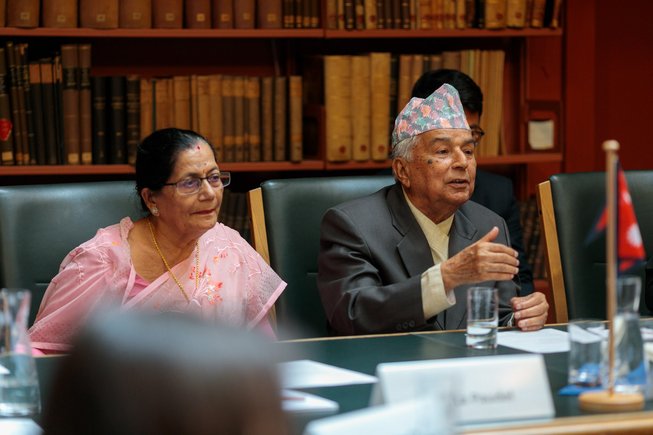




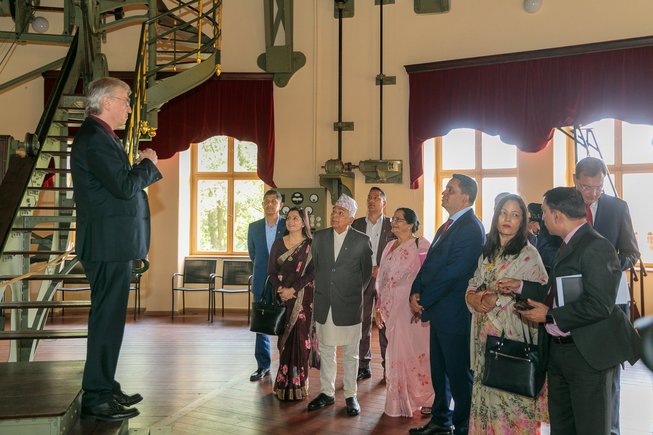

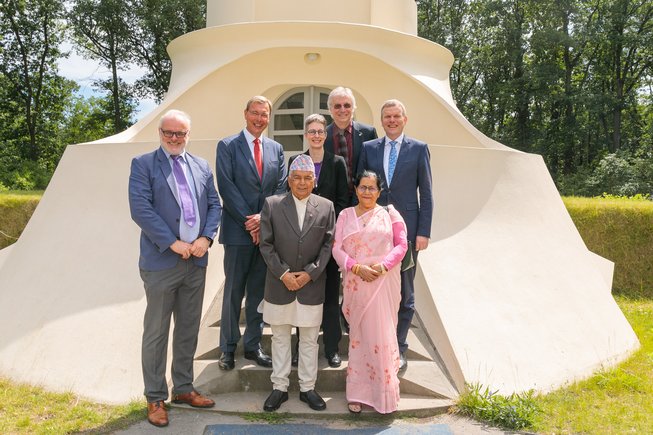

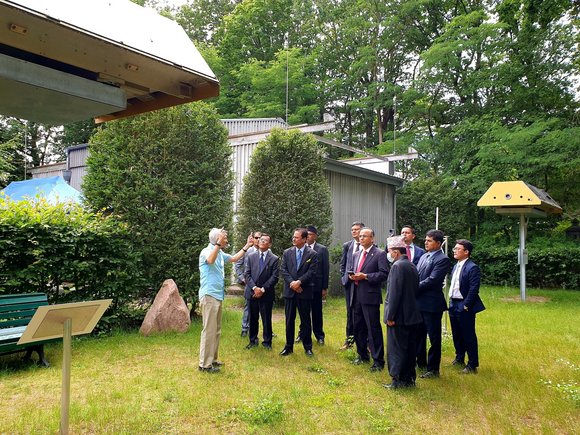
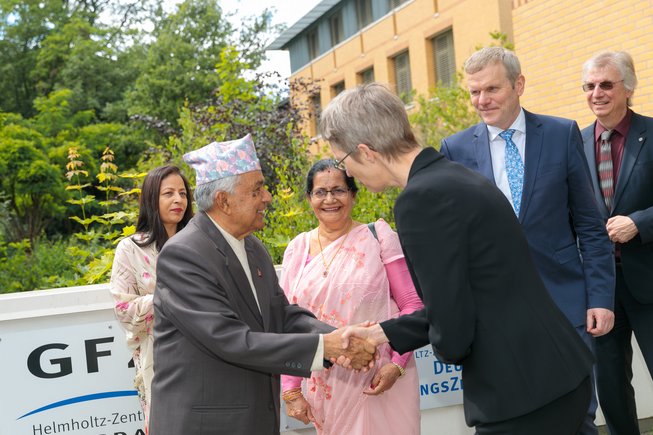
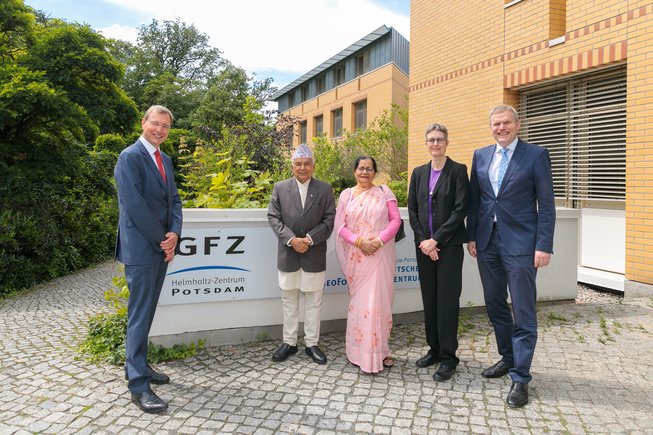








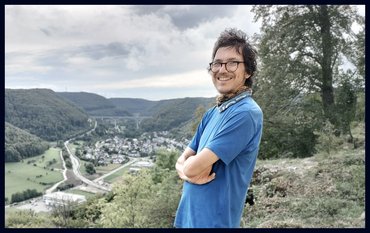
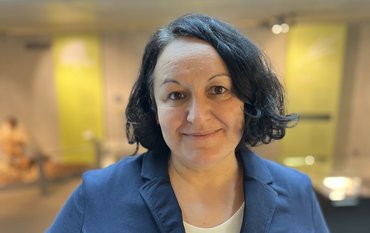

![[Translate to English:] [Translate to English:] Abror Gafurov von dem Schriftzug "Welcome to Azerbaijan" und den UN und COP Logos](/fileadmin/_processed_/2/5/csm_2024_11_Baku_COP29_Abror_Gafurov_1042faec82.jpeg)


![[Translate to English:] Martin Herold standing in front of the library on the Telegrafenberg](/fileadmin/_processed_/c/d/csm_Martin_Herold_d385ee4dd9.jpeg)
![[Translate to English:] Many people are listening to a presentation in the GFZ lecture hall.](/fileadmin/_processed_/c/a/csm_1_Bild1_hell_b9c0e9f5ed.jpeg)
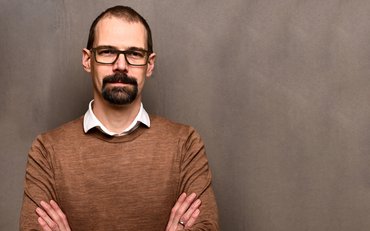

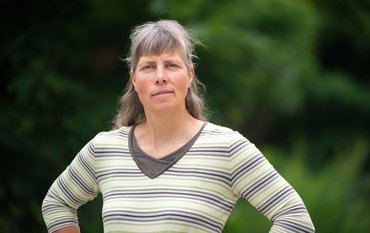

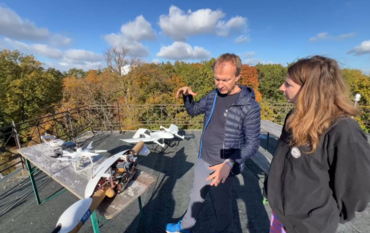

![[Translate to English:] Both scientists sitting on stools in front of a wall of books in the Telegrafenberg library](/fileadmin/_processed_/6/6/csm_Buiter_Castell_DORA_4_e87cb1ea18.jpeg)
![[Translate to English:] Gruppenbild mit 4 Personen](/fileadmin/_processed_/8/d/csm_20241017_GFZ-Emmerman-Medal-005_web_reinhardtundsommer_21a414fa4a.jpeg)

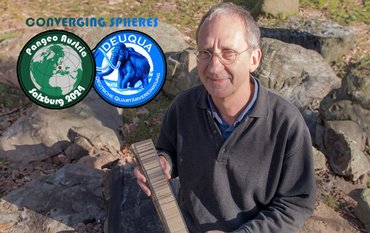


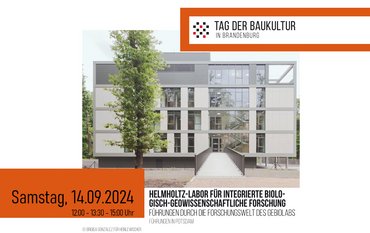
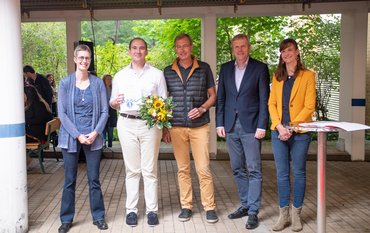
![[Translate to English:] Ice landscape with five red tents](/fileadmin/_processed_/8/9/csm_Zeltlager_auf_dem_Eis_Urheberin_Jenine_McCutcheon_5ced2d523b.jpeg)

